
Gulf of Mexico Dead Zone More Than Double 2035 Target
kill fish and marine life — is approximately 6,705 square miles, the 12th largest zone on record in 38 years of measurement. This figure equates to more than 4 million acres of habitat potentially unavailable to fish and bottom species, an area roughly the size of New Jersey.Scientists at Louisiana State University and the Louisiana Universities Marine Consortium (LUMCON) led the annual dead zone survey July 21–26 aboard LUMCON research vessel Pelican. This annual measurement is a key metric that informs the collective efforts of the Mississippi River/Gulf of Mexico Hypoxia Task Force, a state/federa

Shell Aims to Harness the Power of the Lower Mississippi
priority use cases where ORPC power systems could contribute toward decarbonizing Shell’s existing operations, the first of which is to provide power for Shell’s onshore facilities.In early April, ORPC technicians traveled to multiple Shell sites in Louisiana. With support from Louisiana State University, they assessed each location’s viability to support the production of hydrokinetic power generation. Resource characterization at the sites is ongoing, along with stakeholder engagement. This most recent award will focus on acceleration towards a demonstration project including the
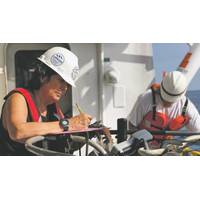
Below-average Gulf of Mexico ‘Dead Zone’ Measured
known as the hypoxic zone) is now 4,280 square miles, which is over two times larger than management targets. Since records began in 1985, the largest hypoxic zone measured was 8,776 square miles in 2017.The measurement was made during an annual survey cruise, led by a team of scientists from Louisiana State University and the Louisiana Universities Marine Consortium (LUMCON) aboard the R/V Pelican during the last week of July. The information gathered is a key metric used by the Mississippi River/Gulf of Mexico Watershed Hypoxia Task Force to measure progress toward achieving their five-year average
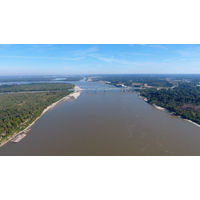
NOAA Forecasts Average Summer 'Dead Zone' in the Gulf of Mexico
the major contributors to the annual summer hypoxic dead zone in the Gulf of Mexico (gray). (USGS)This is the fifth year NOAA has produced a dead zone forecast using a suite of models jointly developed by the agency and its partners — teams of researchers at the University of Michigan, Louisiana State University, William & Mary’s Virginia Institute of Marine Science, North Carolina State University, Dalhousie University and the U.S. Geological Survey (USGS), who provided the Mississippi River nutrient loading data for the models. NOAA integrates the results of these multiple models into
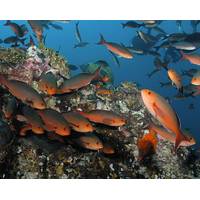
NCCOS Awards $1.7M to Support Habitat Connectivity Research in National Marine Sanctuaries
. Seagrass areas are important fish foraging habitats in coral reef ecosystems. Understanding where these fish forage and how this is affected by the current and future configurations of seagrass beds will help optimize MPA design for species using multiple habitats.Texas A&M University, Louisiana State University, Mississippi State University, University of Florida, University of Texas – Rio Grande Valley, Flower Garden Banks National Marine Sanctuary, NOAA Fisheries Southeast Fisheries Science Center received $740,629 to investigate habitat requirements and connectivity for key reef-associated
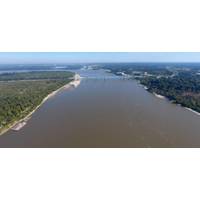
Larger-than-average GoM ‘Dead Zone’ Expected
to help inform overall nutrient reduction targets across the watershed.This is the third year NOAA is producing its own forecast, using a suite of NOAA-supported hypoxia forecast models jointly developed by the agency and its partners – teams of researchers at the University of Michigan, Louisiana State University, William & Mary’s Virginia Institute of Marine Science, North Carolina State University, and Dalhousie University and the USGS, who provided the loading data for the models. The NOAA forecast integrates the results of these multiple models into a separate average forecast and
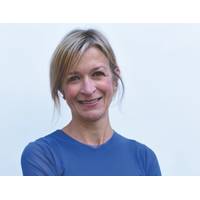
Voices: Jill Zande, MATE II
my only realistic option; but I also knew down deep that it wasn’t for me. I started exploring the idea of making a career switch into marine education, which included looking at DISL’s Discovery Hall and the fantastic education programs it offers.Then my former major professor at Louisiana State University told me about MATE. He had just returned from Monterey where he participated in the MATE Forum, which was hosted at MBARI. This was a gathering of marine-related industry, academic, and government professionals and was designed to discuss and lay out the critical issues facing marine technical

MTR’s “Top 10” Ocean Influencers
20 years ago could not have imagined her position today.As a research associate at the Dauphin Island Sea Lab (DISL), she knew that career-wise, the Ph.D. path was her only realistic options. But she knew deep down that the Ph.D. path was not for her.As fate had it her former major professor at Louisiana State University told her about MATE, helping to launch her career in education that has touched tens of thousands of young lives and brains, and contributed mightily to grooming that oft-discussed ‘next generation’. As Zande celebrates her 20th anniversary with MATE, our “Number
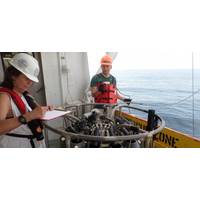
Gulf of Mexico ‘Dead Zone’ Smaller than Usual
area about the size of Delaware. This summer’s smaller-than-expected dead zone size is the fourth smallest area mapped since 1985 and is smaller than the 5,780 square miles forecast by NOAA in June.The effort to determine the size of the dead zone was led by NOAA-supported scientists at Louisiana State University and the Louisiana Universities Marine Consortium during a research cruise from July 24 to 28 aboard the R/V Pelican.“Persistent winds from the west and northwest in the few weeks preceding the cruise likely pushed the low oxygen water mass to the east and piled it towards the central
 February 2025
February 2025





